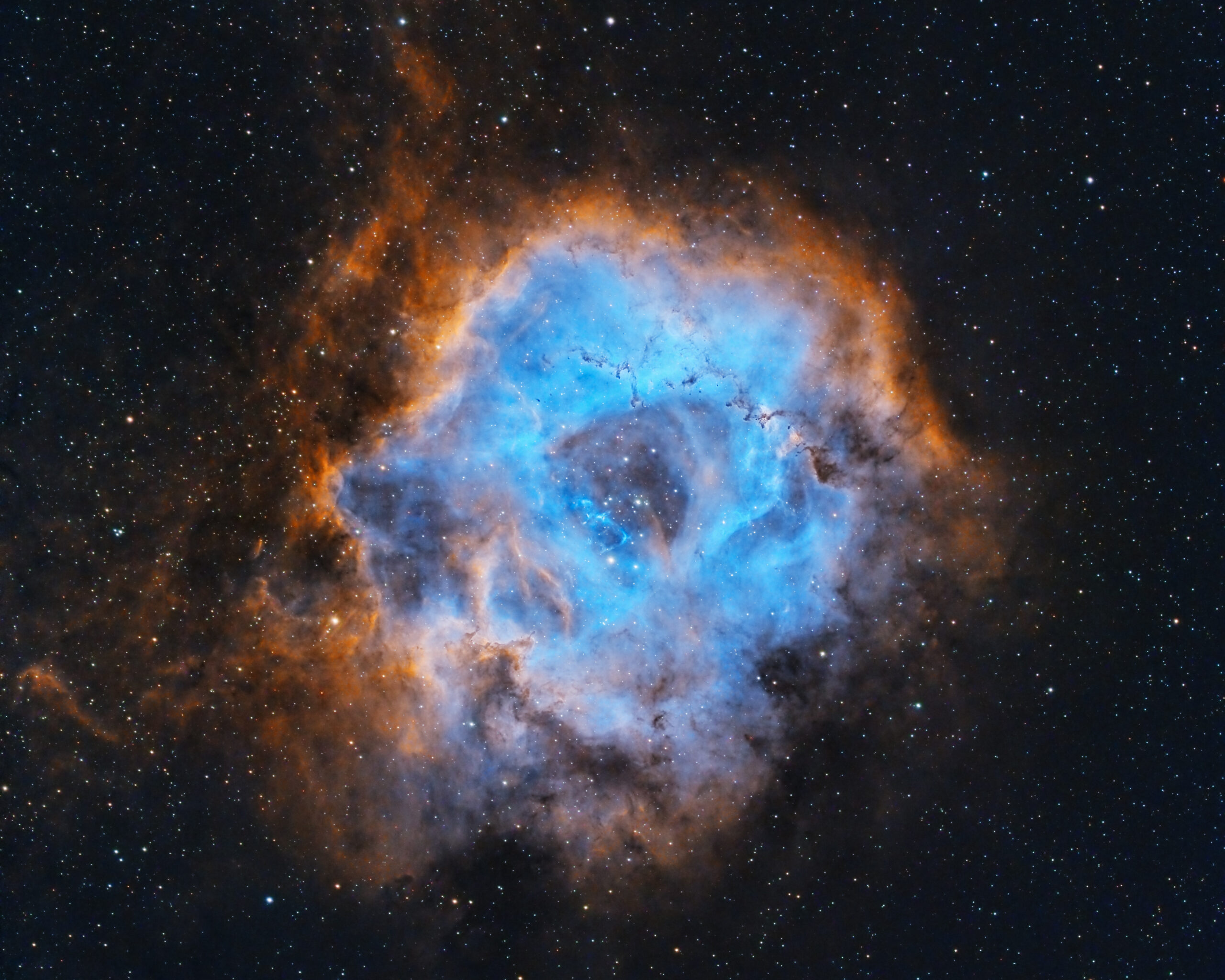When I first began exploring astrophotography in late spring of 2022, I scoured various sources, including books and the internet, for ideas on which celestial objects to capture. It was during this search that I came across the Rosette Nebula, a stunning astral body that immediately caught my attention. Despite its captivating beauty, I was disappointed to learn that I would have to wait until winter to photograph it again. Well, here we are in Winter 2023 and I just finished up editing it.
With almost every target I process, I have a specific vision in mind for how I want it to turn out. To achieve this, I experiment with different techniques, from the simple SHO combination to the dynamic Forax Pixelmath method. After much trial and error, I found that the simple SHO combo yielded the result I was looking for, which is featured above. However, I also tried a Forax version, which I have included below. While the Forax version is undeniably more radiant, it came across as too bright and loud for my personal taste. I tend to avoid overdoing things, and I feel that this particular version may have crossed that line. Of course, others may have a different opinion.

I think (and hope) there are better images of this beautiful nebula in my future. I think both versions came out great, but after staring at them both, I’ve decided I like the simplicity of the SHO version more.
Now for the fun stuff–I am providing a brief summary of how I got here.
- For pre-processing, I utilized AstroPixelProcessor, which allowed me to create master files for Ha, Oiii, Sii, and R, G, and B
- I combined the narrowband in Pixinsight using the channel combination tool and mapped SHO to RGB
- I used the Ha master as a luminance layer, and was able to bring out more detail and less noise
- For RGB star integration:
- I used StarXterminator to extract the stars from the narrowband image
- I then extracted the luminance layer from the narrowband stars image
- I added the narrowband luminance layer to the RGB stars image
- I combined the RGB and starless narrowband images via Pixelmath to obtain RGB stars
- You can see this method here
The equipment and dataset of this image are also below.
